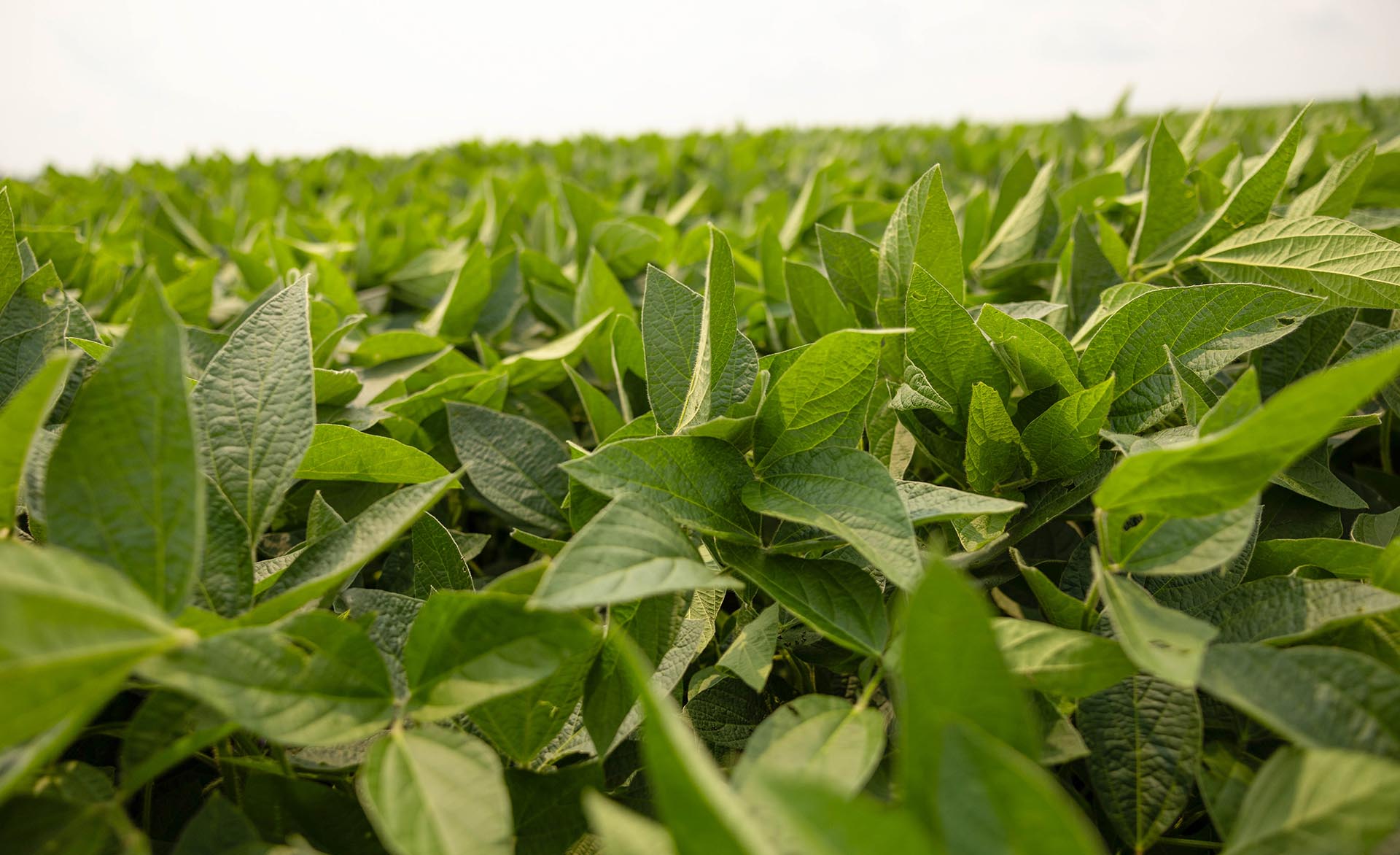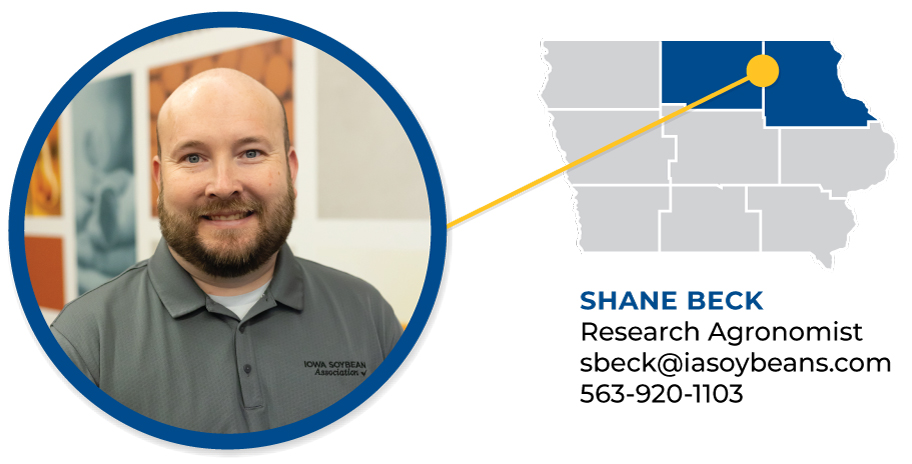
(Photo: Iowa Soybean Association / Joclyn Bushman)
Walking Rows: ISA agronomists update – August 29
August 29, 2024 | Kriss Nelson
The crops are beginning to show signs that the harvest is just around the corner. Iowa Soybean Association (ISA) agronomists encourage farmers to pay close attention to what is happening in the fields as they prepare for the harvest as this will help them make better decisions for the following crop year.
Drew Clemmensen – Northwest/Western Iowa
Soybeans are in the R6 stage, and many are starting to senesce and drop leaves. This opens a window for considering flying on cover crop seed. The goal of this method is to time the application to take advantage of collecting heat units and chances of measurable rainfall this fall to improve germination and boost growth going into winter.

Later planted corn fields are in the R4 stage of development, with most of the fields in my area well into the R5 stage. Hot days and warm nights will push this crop to maturity faster than ideal. Continue to scout fields to understand which fields are drying down, as some varieties and maturities will do this more efficiently than others.
Lucas DeBruin – Southeast/Eastern Iowa
Crops continue to appear in favorable condition in my area.
Earlier planted soybeans are beginning to change color and show signs of maturity, with some Sudden Death Syndrome (SDS) continuing to show up in spots. The rain we received this week will help with pod fill.
Soybeans in relay cropping trials look great. In some cases, they are eight inches to a foot shorter than regular soybeans, but the nodes are stacked and full of pods. I am very optimistic about those yields.

Corn is also starting to turn, and the heat has expedited a couple of fields. Some fields are struggling due to a later planting date, and nitrogen deficiency is possibly the contributing factor. Other fields appear they will yield well and evidence is showing from farmers that are happy with their silage harvest that began last week.
Continue to scout and pay attention to what is happening in the fields. This can help with making management decisions for the next growing season, as there is not much incentive to make rescue applications for insect or disease pressure.
Alex Schaffer – Central Iowa
Soybeans in my area are starting to senesce, proof that harvest is coming naturally.
SDS continues to show up on soybean fields. If soybeans are in the R5 stage or earlier, those beans senescing right now from SDS will take some yield loss. Soybeans that have reached more mature stages, where pods are pretty well full, may not be as concerning.

Soybean aphid populations continue to grow. There are concerns are pyrethroid chemistry is losing efficacy on aphids. Soybeans at an R6 stage or younger may justify an application.
This week’s heatwave could negatively affect test weight in corn. Although it is out of the farmer’s control, it is something to be aware of when watching the yield monitoring in the combine.
Please continue to look for Tar Spot. Although nothing can be done at this point, it will help agronomists and researchers understand how far the disease has spread into Iowa.
2024 Pro Farmer Tour results have been released. It appears they have found a large crop will be harvested in Iowa and Illinois. While visiting with farmers this week at the Farm Progress Show, they are optimistic for high yields and ready to start harvest despite the challenges they faced this growing season. However, concerns about commodity prices are weighing heavy on their minds.
Shane Beck – Northeast/Northern Iowa
While scouting fields in my area this week, I noticed soybean fields are maturing, which means harvest is right around the corner.
I did soybean yield estimates last week, and yield potential appears to be high; however, that potential could be affected by the lack of moisture in August for much of the state. Most places in north-central and northeast Iowa have received between 0.5 and 1.5 inches for August.
Soybeans could use up to about 2.5 inches of water a week during some of the reproductive stages. This has caused some moisture stress to show up over the last few weeks and will eventually produce some smaller soybean seeds.

This is also a good time to scout your fields to evaluate how products performed visually before harvest. If you applied a fungicide to your corn or soybeans, this would be a good time to see how it performed and if it persisted as long as you thought it would.
You can also scout for weeds, especially in corn fields that might not be as obvious from the road, and decide if something needs to be changed going into 2025.
Some diseases like bacterial leaf blight cannot be prevented or treated by the use of fungicide. The only way to help prevent it is through genetics—study seed selection books to pick varieties with a good disease tolerance rating. Taking notes of different issues or concerns with varieties can help make purchasing decisions for 2025.
Back